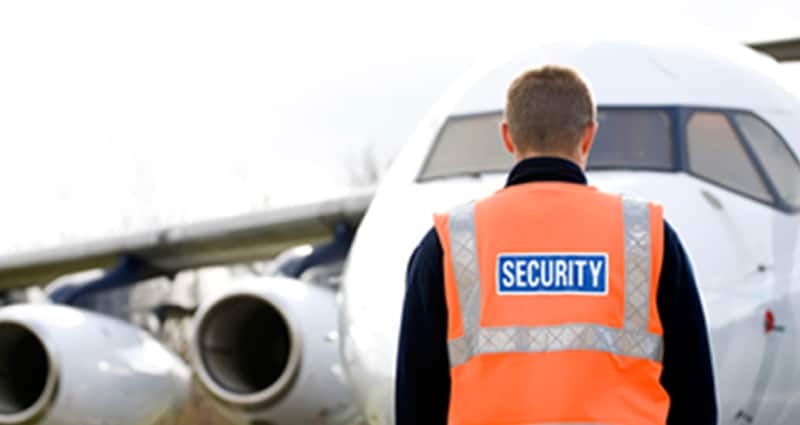The Security Management System is Coming!

Building in structure and standardization within a dynamic landscape
Aviation security has evolved into a well-coordinated, forward-looking program, capable of assessing persistent as well as evolving threats. With Sept. 11, 2001, never far from the collective psyche of the transportation community, we can never let our guard down nor succumb to the belief that this is all in the past. The world is not getting smaller, it’s getting more complicated.
Providing a platform to sustain effective security measures is no small feat within the global transportation community where airlines, airports, corporate and high net worth individuals are all faced with mounting financial challenges. Like safety, accepting anything less than a fully effective security system is only inviting failure or that unforeseen event that caught us off guard. Equally important is not putting too much distance between world events and what can occur on our home turf or area of operations. All activities must be tempered with well-thought-out security considerations.
From what was once a loosely coordinated, “one size fits all” effort, we now have the Security Management System (SeMS).
While there are no catch-all solutions, the aviation industry is getting positive results from the formalized Safety Management System (SMS) approach and this is evident in the decreasing frequency and severity of aviation accidents and events. With the impending issuance of the SeMS from ICAO, airlines, airports and forward-looking corporate/business aviation operators will equally benefit from a thorough and consistent approach to meeting regulatory as well as dynamic operational security challenges. This is most effectively accomplished by means of a structured approach to implementing security processes throughout an organization. It is linked, through standardization, to ancillary and complementary service providers.
Like SMS, the SeMS treats security like any essential business practice, complete with organizational structures, accountabilities, policies, processes and procedures. SeMS builds on ICAO Annex 171 Standards and Recommended Practices. It is now incorporated, in part, within the IATA Operational Safety Audit (IOSA) program and within IS-BAO and other emerging standards.
The SeMS concept is nothing new, though it has grown up considerably. Today, an effective SeMS includes proactive and reactive elements. These can be grouped into six basic building blocks of safety:
- Senior management commitment – policy;
- Resource management and responsible agency coordination;
- Threat assessment and risk management;
- Emergency management;
- Quality assurance and oversight; and
- Aviation security program
Promoting the implementation of risk-based security measures can be achieved through increased awareness and promotion of SeMS concepts within an organization. With a risk-based approach, regulators and operators have the flexibility to customize measures to reflect economic and operational conditions, while still having the flexibility to anticipate and react to changing threats. Changing threats can be quickly mitigated with minimal operational disruption.
The good news: Most operators already have many of the core SeMS elements in place, although they may not be formalized and communicated throughout the organization so they become standard operating procedure. Remember, like safety, an effective security program is all about maintaining a level of awareness commensurate with known and probable threats.
For others, combining these critical elements into a dynamic, pervasive system will be a challenge.
SeMS is more than a three-day seminar, an IT data collection program or a binder on a shelf. It’s a sustained method of raising enterprise-wide awareness of the dynamic risk profile. To make a real impact, SeMS principles must permeate actions, communications, policies, and attitudes from the boardroom to the mailroom—and everywhere in between.
Perpetual Motion
SeMS is a great step forward. But it’s just one step—not a complete solution. Progressive operators and airports are bolstering their security efforts through routine audits, system and vulnerability assessments, and threat awareness campaigns that identify potential gaps and weaknesses. The SeMS, as a common platform, provides a more effective means to share information and address known and emerging threats.
The need to push beyond the bare minimum is underscored by rapid changes in technology, the ever-present threats to our aviation and transportation systems, and the political environment where single, lone-wolf opportunists present an equal threat to an organization’s security system and brand integrity.
The bottom line: Transportation, in all its forms, remains a legitimate target. By providing a standardized platform from which all operators and security practitioners apply a similar security approach, the potential for gaps greatly decreases while the system becomes more secure.
About the Expert
Lou Sorrentino has over 30 years of experience in the aviation industry. He consults in areas such as aircraft and airport operations; safety, security and quality; and civil aviation regulation and safety oversight. Mr. Sorrentino has developed and assisted in the implementation of numerous Safety Management Systems worldwide and performs and performs operational assessments of airlines, corporate & VVIP flight departments, airports, airport-related businesses, and civil aviation authorities in virtually all regions of the world.
Contact: Javascript must be enabled to see email addresses.
International cell: +1 917-916-8334
Source: ICF SH&E
1. Security—Safeguarding International Civil Aviation Against Acts of Unlawful Interference

AvMaSSI provides safety, security and operational integrity evaluations, consulting and auditing to airlines, airports, charter and corporate operators, OEMs, marine operators, seaports, governments, international agencies and financial institutions the world over. AvMaSSI provides IS-BAO and IS-BAH preparation and audit services and supports Global Aerospace and its SM4 and Vista Elite Programs with focused safety/SMS, security, regulatory compliance and IS-BAO auditing services. AvMaSSI is a proud member of the Global Aerospace SM4 partnership program.
http://www.Avmassi.com
© 2024 Aviation & Marine Safety Solutions International. All Rights Reserved.
Next ArticleRelated Posts

Safety in Numbers: Trends in Aviation Accidents and Incidents
Every accident is preventable; the problem is that we don’t know how to prevent it until after the accident happens. However, what we can do as an industry is honor the anguish of each event by sharing the information, the mistakes and the outcomes to improve safety for everyone.

Is ChatGPT Ready To Analyze My SMS Portal’s Safety Reports?
While industry experts continue to design the next-gen AI-backed SMS software solution, safety managers can use ChatGPT to help them treat safety issues, audit findings and classify hazards contained in their SMS reporting.

